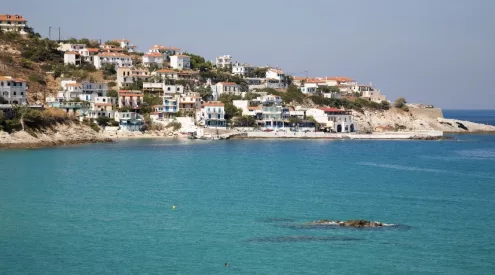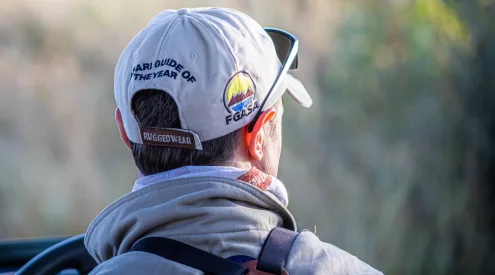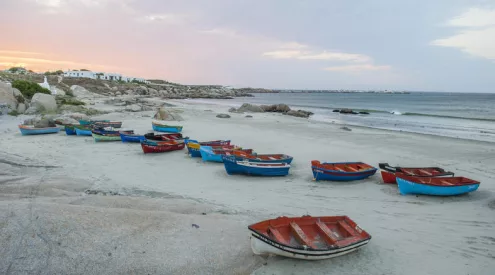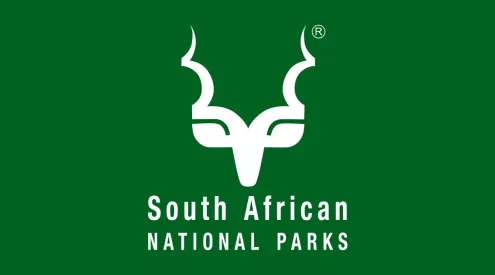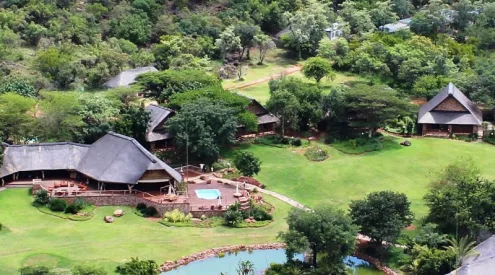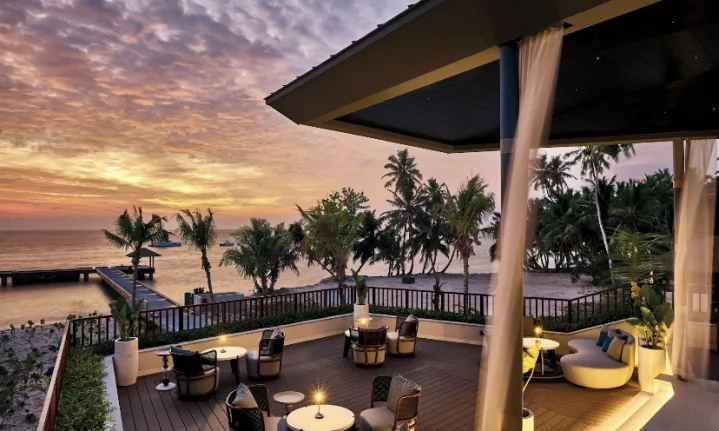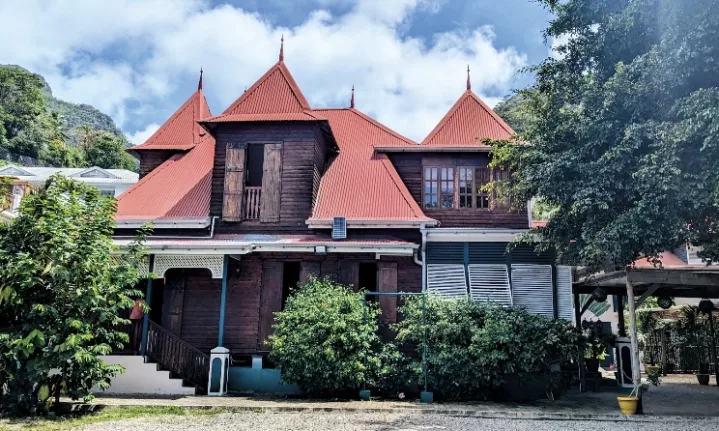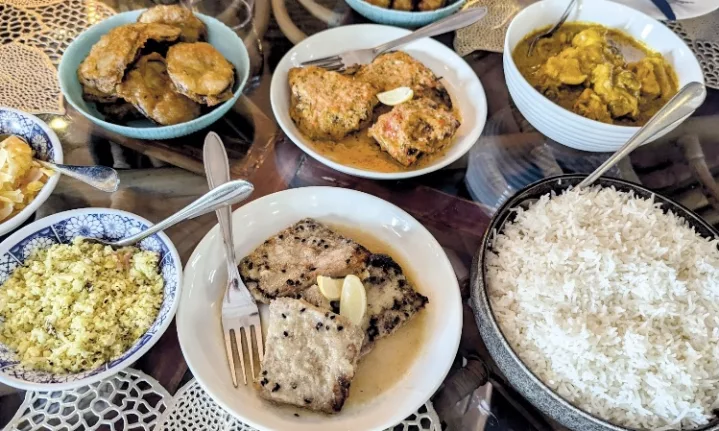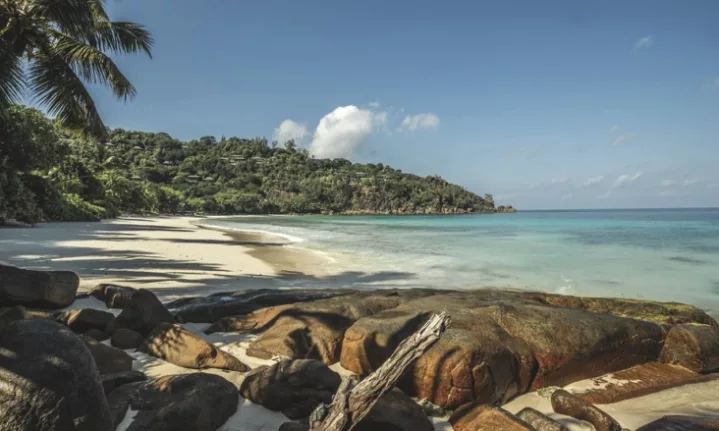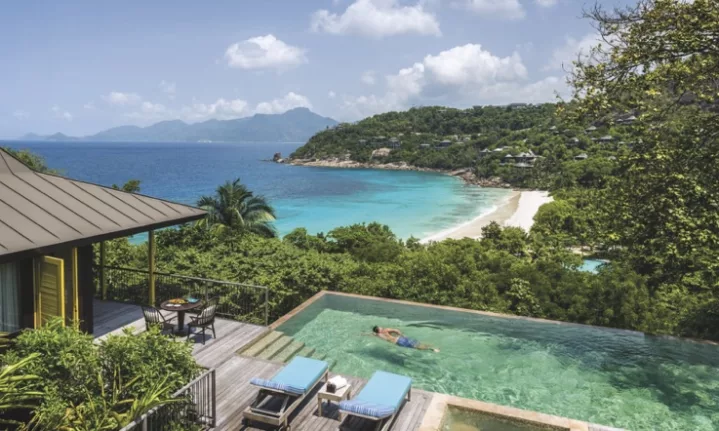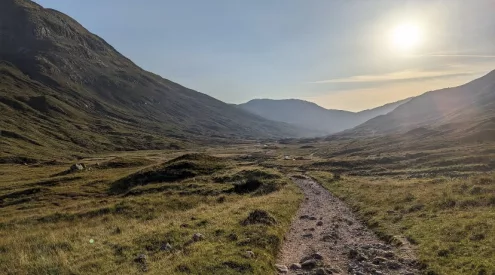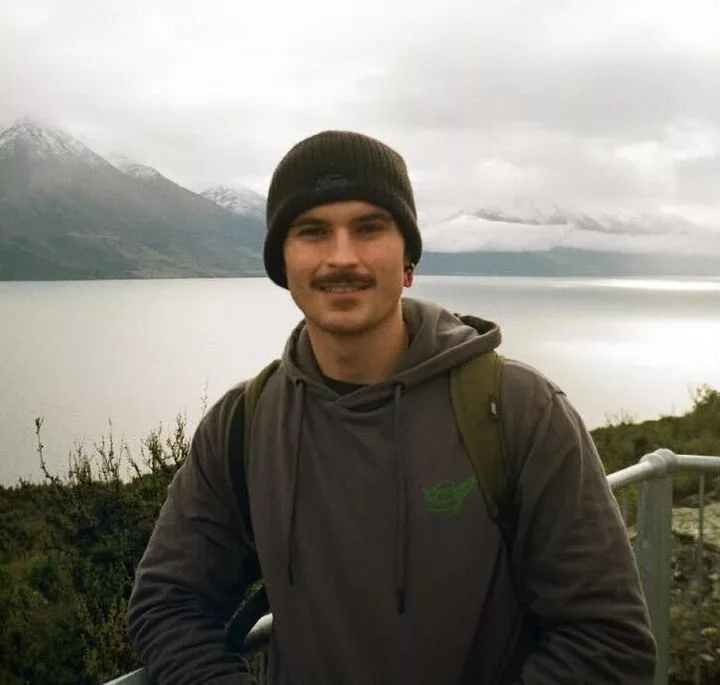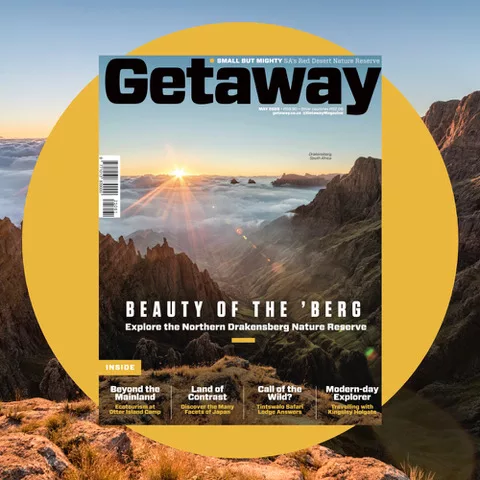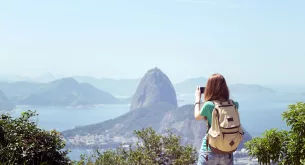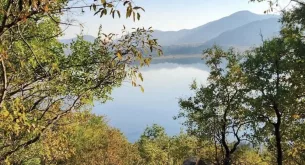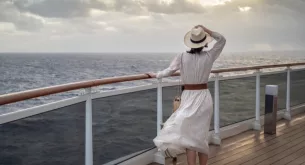It was a short, steep hike up Morne Blanc. The trail snaked through the misty rainforest of the Morne Seychellois National Park.
Dense forest, towering tree ferns, fallen leaves rustling underfoot and bird song echoing through the undergrowth. It was cool, the forest canopy enveloped the trail in shade, providing welcome relief from the sun as we climbed.
Reaching the viewing platform at the top of Morne Blanc, we looked out at the turquoise waters of the Indian Ocean, stretching to the horizon. Brilliant blue skies hung overhead, panoramic views of Mahé Island spread out before us, white-tailed tropic birds swooping and soaring above us, lush emerald green rainforest covering the undulating hills below, and in the distance, tiny jewel-like islands dotted the sparkling sea.
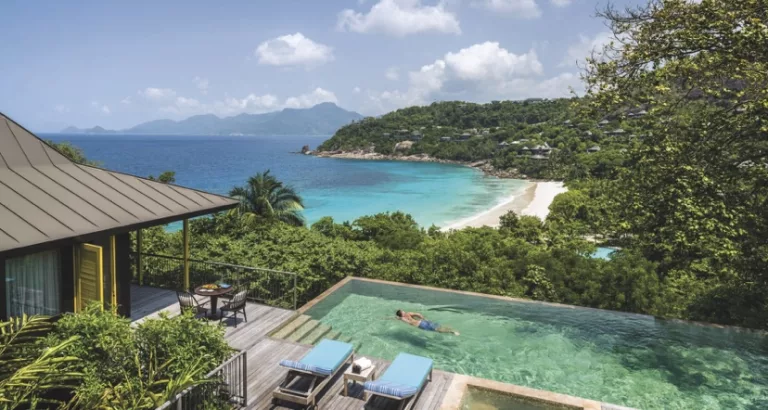
Mother nature was generous when it came to the Seychelles. The archipelago is so beautiful that early explorers thought they’d stumbled upon the Garden of Eden.
Descending to sea level, it was time to explore Victoria, the Seychelles’ capital and its only city. Home to only 25,000 people and with just two traffic lights, this is one of the world’s smallest capital cities – you’d struggle to get lost here!
What you will find in Victoria is 18th and 19th-century French and British architecture, the rainbow-coloured Arul Mihu Navasakthi Vinayagar Hindu Temple, the Sir Selwyn-Clarke Market, with its seafood, tropical fruits and souvenirs, Freedom Square, and the colonial-era Law Courts.
A quaint and quirky sight is the silver-painted colonial-era Victoria Clocktower, or Lorloz as it’s known in Creole. A replica of Little Ben, the clocktower at the entrance to Victoria Station in London, the Seychelles version didn’t actually work for the first 96 years of its life, but now strikes twice instead of once on the hour, as if trying to make up for lost time.
When the humidity of town got a bit much, we retired to the Botanical Gardens, a quiet, green getaway. We checked out some of the 280 different plant species, including the suggestively shaped, endemic Coco de Mer palms, an icon of the Seychelles.
We visited the spice grove, the ginger lawn, and the patch of rainforest with its resident fruit bats, all before finishing up at the giant Aldabra tortoise enclosure.
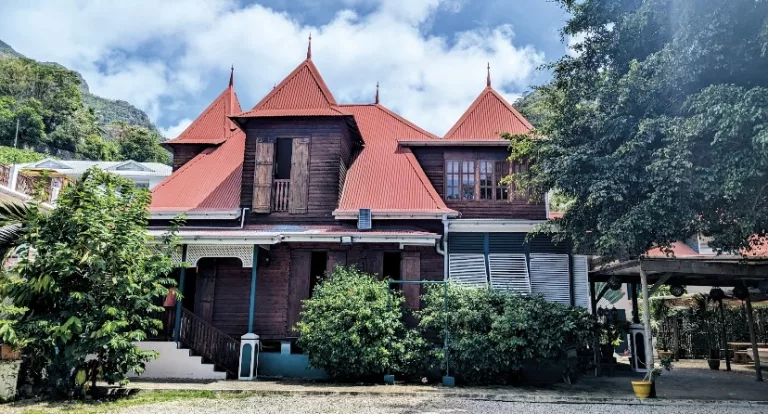
We had a table booked for lunch at Marie Antoinette Restaurant, a five-minute drive from the gardens. With its wood and iron colonial-style architecture, steep red roof, polished wooden staircase, wide verandas, shuttered windows and lace tablecloths, Marie Antoinette’s is a slice of Seychelles history.
It’s been around long enough for Henry Morton Stanley, of ‘Dr Livingstone, I presume’ fame, to have stayed here in 1872, on his return from mainland Africa.
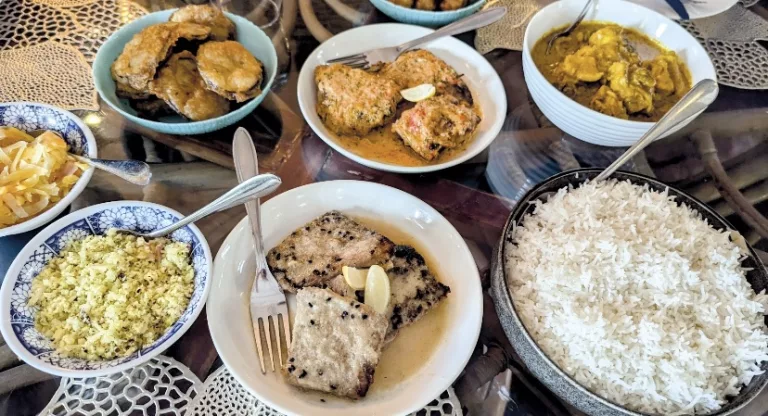
Established as a restaurant in 1972, the establishment’s creole menu is a well-guarded family secret, that hasn’t changed much in more than 50 years. We sampled spice-infused Creole favourites that included parrotfish fritters, grilled red snapper in a yellow curry sauce, aubergine fritters, chicken curry, tangy mango salad and pumpkin chutney, all served with bowls of steaming white rice and washed down with a chilled Seybrew beer. Having just seen the bats in the Botanical Gardens though, we couldn’t bring ourselves to try the curried fruit bat we spotted on the menu.
At the end of a day spent exploring Mahé’s north, we retreated to the quiet southern peninsula and the Four Seasons Resort Seychelles. Our villa was tucked inconspicuously into the hillside overlooking Petite Anse Bay, the best swimming beach on Mahé, and a refreshing ocean breeze floated up the hillside from the beach.
From our verandah, we gazed past our private swimming pool and out over the bay far below, where a tiny, perfect comma of pure white sand was lapped by aquamarine waves.
Four Seasons has partnered with marine conservation organisation, WiseOceans, to create a marine discovery programme in the Petite Anse Bay.
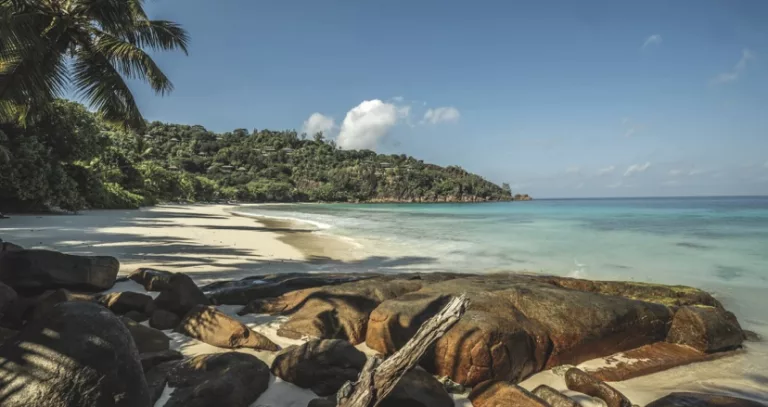
The programme includes various guest activities and an associated coral reef restoration project. The reef restoration project aims to restore degraded reefs through coral farming, a process that involves harvesting small coral fragments and growing them in an underwater nursery until they are mature enough to be transplanted back into the reef. Since its launch, over 5,000 corals have been grown and 3,500 guests have visited and got involved with the project.
After breakfast we wandered down to the beach and, after chatting with the resident marine biologist, donned masks, snorkels and fins and headed out into the water.
Swimming towards the rocky point at one end of the bay, we were surrounded by clouds of fish – big and small, long and short, spotted and striped. Butterflyfish, surgeonfish, pufferfish, parrotfish, angelfish, and even the occasional octopus.
Streamlined stingrays, clumps of colourful coral, anemones with their resident clown fish, a vibrant underwater world that Four Seasons is working hard to protect.
Having soaked up sufficient vitamin ‘sea’, it was time to head to the resort spa. Perched on a hillside, at the highest point of the property, the spa has the most incredible views down over the resort and out across the shimmering waters of Petite Anse Bay. The scents of lemon, peppermint, coconut, tropical flowers and sea kelp filled the air and I was whisked off for a massage, emerging sometime later, thoroughly rejuvenated and relaxed.
Home to the international airport and with 90% of the population living on Mahé, the largest island, this was a great place for us to start our travels, but with 115 far-flung islands to explore, there was plenty more to see.
Island-hopping is easy in the Seychelles, thanks to an efficient ferry system and plenty of charter flights. Praslin, the Seychelles’ second largest island and a 20-minute flight from Mahé, is a popular option.
The scenery in the island’s Vallée de Mai nature reserve is Jurassic. It’s one of the world’s smallest natural UNESCO World Heritage Sites, and millions of years of isolation have led to the evolution of numerous unique species found nowhere else on Earth.
For beaches, Anse Lazio in the northwest of Praslin is a mix of golden sand, crystal-clear water and impressive granite boulders, while the powdery Anse Georgette was ranked one of the top 10 best beaches in the world for 2024.
From Praslin, it’s a hop, skip and a jump to the tiny, uninhabited, reef-ringed island of St Pierre, where shoals of stripy sergeant fish and rainbow parrot fish dart past awestruck snorkelers. Alternatively, the laid-back island of La Digue is only a 15-minute ferry ride from Praslin. Cycling is the transport mode of choice here, with no cars allowed, unless they are providing a public service.
ALSO READ: Seychelles: a postcard-worthy paradise
Our next stop was the blissful Platté Island, a tiny emerald speck, blissfully isolated in an ocean of blue. 130km south of Mahé, the island is home to the Waldorf Astoria Seychelles, and after a quick flight, we were touching down in a luxurious island paradise, where the only sounds to be heard were the lapping of waves on the shore, the wind rustling through palm trees and the calls of swooping seabirds.
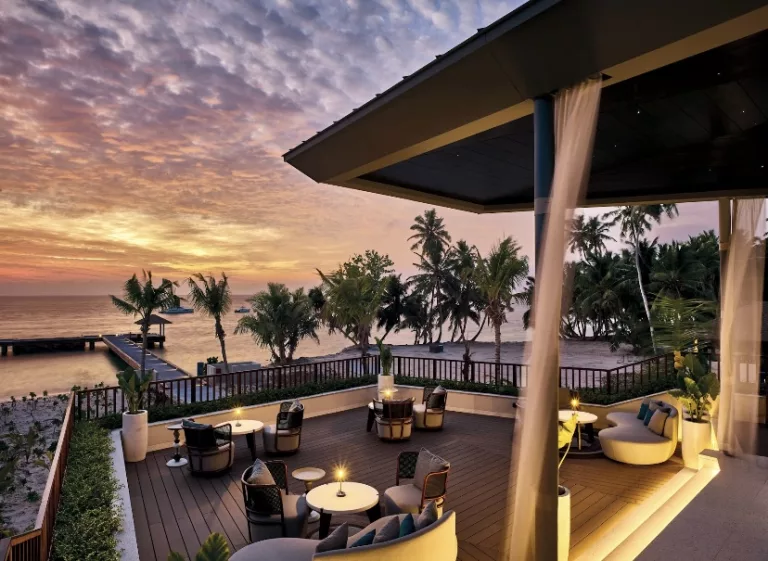
The Waldorf stamp of opulence is everywhere here, from the lavish villas to the signature Parisian-inspired Peacock Terrace, where island-roasted coffee and unique tea blends are served. The champagne bar is the spot to head as the sun goes down and there’s a luxurious spa with an impressive menu of therapeutic treatments.
For foodies, there’s everything you could want for on Platte, with restaurant options ranging from seafood to Creolatino food and a fine-dining restaurant with a garden-to-table vegetarian menu.
But there is more to this treasure island than just the resort facilities. Thanks to the fact that the island has barely been inhabited before, and also to strict conservation restrictions imposed on development, the island is a natural paradise.
Hundreds of hawksbill turtles nest on the beaches here, in fact, the island has the largest population of nesting turtles in the Seychelles, and at the right time of year, guests can witness newly hatched turtle babies poking their heads out of the sand and making their manic dash, on tiny flippers, all the way to the water.
The house reef is the haunt of stingrays, manta rays and small reef sharks, the underwater seagrass meadows are some of the best preserved in the Indian Ocean, perfect for year-round turtle grazing.
There’s a dedicated marine conservation centre on the island, with a full-time marine biologist, whose job it is to monitor and preserve all these natural wonders.
The 50 suites that dot the perimeter of Platte Island have been carefully set back from the oceanfront, with each one featuring a dramatic fan-shaped roof, in a subtle homage to the hawksbill turtles.
From the room, folding glass doors led out to a deck, a private pool, and our pathway to the beach. Early in the morning, hundreds of Lesser Noddy and Sooty Terns chatted in the palm trees overhanging our room, and on morning walks around the perimeter of the island we spotted baby sharks and stingrays, skimming through the shallow water.
Sunset found us sitting on the warm sand, watching strings of seabirds, silhouetted against the orange and pink sky, and at night time, walking barefoot in the sand to our villa, the blanket of stars overhead was magical.
A short hop from Platté back to Mahé and it was sadly time to depart the Seychelles, but not before we’d stopped off at the Takamaka Rum Distillery, for a final taste of the islands.
Rum was brought to the Seychelles by the British Navy, around the middle of the sixteenth century and for years nearly every family in the archipelago had its own unique concoction of herbs and spices they blended to make what is known as rhum arrange.
Nowadays, Takamaka Distillery, on the 18th-century La Plaine St Andre Estate, has perfected the art and produces an extensive range of Seychellois Rums that, flavoured with local fruit and spices, somehow manages to capture the spirit of the islands in every sip.
Visitors can meander through the museum, indulge in the scents of a medicinal garden, and even interact with the two majestic Giant Aldabra tortoises – Taka and Maka, we got lucky and had a behind-the-scenes tour, sampling the entire range, before wobbling our way to the airport and pouring ourselves onto our flight home.
The Seychelles is a paradise of islands, scattered like gemstones across the ocean, the perfect mix of secluded beaches, swaying palm trees, warm azure waters, abundant marine life, and a vibrant culture. Goodbye, until we meet again, or as they say in Seychellois creole “orevwar, ziska nou zwenn ankor”!
Best time to visit
April, May, October and November are the hottest and driest months in the Seychelles, and calm seas offer good visibility for diving and snorkelling.
Between October and December sea turtles come in to nest, but you’ll have to wait until January to March to see the hatchlings emerge.
This overlaps with the whale shark migration season, which tends to be from October to November. September and October are the months to spot migratory birds passing through the Seychelles, though April and May are breeding season and May to September is for nesting. December to March is the wet monsoon season, so perhaps not the best time to visit. It’s worth remembering that weather patterns can vary significantly between islands.
Whether planning a tropical beach stay in the Seychelles, or perhaps contemplating a combination of a safari with some sand, the bush with the beach, Mahlatini Luxury Travel have been putting together African travel itineraries for over 20 years and can plan a visit with just the right amount of adventure and relaxation. https://www.mahlatini.com/
This article was written by Sarah Kingdom for Getaway’s January 2025 print edition. Find us on shelves for more!
Pictures: Courtesy Images
Follow us on social media for more travel news, inspiration, and guides. You can also tag us to be featured.
TikTok | Instagram | Facebook | Twitter
ALSO READ: Tunisia: the jewel of the North


